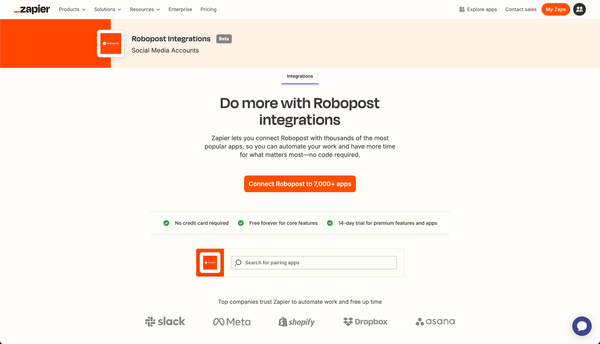Utilizing Social Media for Customer Service and Engagement
Explore how to boost customer service & engagement on social media with effective strategies, best practices, and future trends.

Social media is a big part of our daily lives today. It's not just for staying in touch with loved ones; it's also changed how businesses talk to their customers. Social media gives companies a special chance to connect with their audience, and when used right, it can really help keep customers coming back. Let's take a closer look at how social media can do this.
Key Takeaways
- Social media is crucial for giving immediate customer support and for directly engaging with your audience.
- Setting up dedicated support channels and quick response protocols on social media can really make customer service better.
- Looking at data and using tools to listen to what's happening on social media are really important for seeing how it's affecting customer service and engagement.
- The future of customer service on social media involves keeping up with new trends, using AI, and making sure privacy and security are priorities.
Strategies for Effective Social Media Customer Service

Establishing Dedicated Channels for Support
In social media customer service, having dedicated support channels is really important. These separate profiles or groups are like a spotlight for customers who need help, making sure their questions don't get lost in all the other posts on a brand's main social media page.
- Dedicated Profiles: Make separate social media accounts just for customer service to manage questions better and give personalized help.
- Direct Communication: Provide clear and easy ways for customers to talk to you, like chat or interactive help desks, to solve problems quickly.
- Team Organization: Assign different types of messages to team members with the right skills, such as sales questions to the sales team and support issues to the customer service team.
By separating customer service from the main business profile, brands can earn trust by responding quickly and solving problems, while also keeping a neat system for helping customers. This not only makes customers happier but also helps the support team work more efficiently.
Implementing Rapid Response Protocols
In social media customer service, being fast is really important. Customers want quick answers, and a delay can make them unhappy and even make them stop doing business with you. To reply quickly, companies should do these things:
- Make a clear plan for communication, like checking social media often and telling everyone who needs to know right away.
- Keep all messages inside and outside the company in sync so everyone says the same thing.
- Use templates and FAQs to answer common questions fast and the same way every time.
- Let specialized teams handle different kinds of conversations, like sales or customer support.
Doing these things helps businesses reply faster and make customers happier. It's also important to be ready for busy times, like when a new product comes out or during sales, so you can handle lots of customer questions well.
Looking at how customer service goes on social media can show what problems come up a lot and where things can be better. This helps the team always give the best service they can.
Training Teams for Consistent Brand Messaging
Training your team to keep the same message across all social media is really important to keep your brand consistent. It's not just about what the messages say, but also how they sound, look, and overall feel, which should match your brand's values and style.
- Train and Onboarding: Teach your team the messaging rules and give them ongoing help. Having the same message needs everyone in the company to be on the same page.
- Resource Allocation: Make sure your team has everything they need, like message templates and brand materials, so they can represent your brand well.
- Storytelling: Use brand stories to make a connection with your audience. Share stories of happy customers and your brand's journey to make your brand feel more relatable and friendly.
Monitoring and Measuring Social Media Impact

Analyzing Social Media Metrics for Service Excellence
In the realm of social media customer service, analyzing metrics is crucial for understanding and enhancing the customer experience. Metrics provide a clear picture of how customers interact with your brand and where improvements can be made. Regularly reviewing these metrics can help identify common themes and recurring issues, allowing for proactive problem-solving and service optimization.
- Customer Satisfaction Score (CSAT): Measures customer satisfaction with a recent service interaction.
- Net Promoter Score (NPS): Gauges customer loyalty and the likelihood of recommending your service.
- Response Time: Tracks the speed of customer service responses.
- Resolution Rate: Indicates the percentage of customer issues resolved.
By keeping a close eye on both positive and negative mentions, businesses can swiftly address concerns and capitalize on opportunities to delight customers. This proactive approach not only resolves individual issues but also contributes to the overall improvement of service quality.
Social media platforms offer a treasure trove of data that, when analyzed effectively, can lead to significant service enhancements. For example, tracking social media mentions can reveal insights into popular products or services and highlight areas for improvement in service delivery.
Using Social Listening Tools for Real-Time Insights
Tools that listen to what people are saying online are crucial. These tools help businesses understand how customers feel and what they're talking about by tracking things like mentions, hashtags, and keywords related to the brand. They can spot trends, see if people are happy or upset, and allow companies to respond quickly to customer needs.
Here's how social listening can improve customer service:
- Finding problems: Quickly discover issues customers are talking about online.
- Tracking trends: Identify new patterns in what customers like and don't like.
- Learning from competitors: Keep an eye on what competitors are doing to stay ahead in customer service.
Using social listening in your customer service plan helps keep your brand responsive and up-to-date in the fast-paced world of social media.
Benchmarking Against Competitors for Strategic Advantages
Benchmarking against competitors means looking at how they're doing to see where you stand and how you can improve. By checking out what your competitors are up to and how well they're doing, you can learn a lot about what works and what doesn't in your industry.
Here are some tips for using this information:
- Keep an eye on performance: See how your social media and influencer marketing efforts are doing and make changes as needed.
- Compare your options: Think about how much you're spending on organic versus paid content to get the best results.
Listening to negative feedback can be really helpful for figuring out what customers want and making your strategies better.
The goal isn't just to see how you stack up but to find ways to improve your social media presence and how well you connect with customers.
Best Practices for Social Media Customer Service

Maintaining a Positive and Professional Online Presence
Having a positive and professional online image is really important for good customer service. You want to make sure every post, response, and comment adds value for your customers and helps build strong relationships with them.
When dealing with negative comments, it's best not to delete them unless they're really inappropriate. Instead, focus on fixing the issue and ask the customer if they'd be okay with removing the comment once it's sorted out. If they leave it up, respond publicly to thank them for their patience and explain how you handled their concern.
Keeping a consistent tone is crucial. Whether your brand is friendly and casual or more formal, make sure your customer interactions match your brand's style. Here are some steps to help you get the right tone:
- Use separate social media accounts for customer service.
- Be thoughtful in your messages and adjust your tone as needed.
- Make your conversations feel personal and human.
- Share customer stories to connect with people on a deeper level.
Addressing Negative Feedback Constructively
When you receive negative feedback on social media, it's important to address the issue and have a constructive conversation. Start by thanking the customer for sharing their thoughts and let them know you're taking their concerns seriously. Here's a simple plan to help you respond:
- Acknowledge the feedback quickly.
- Thank the customer for their input.
- Think carefully before responding.
Make sure your tone matches the customer's feelings while staying professional. If the conversation needs more discussion, suggest moving to a private chat like email or direct messaging. This shows respect for their privacy and your commitment to fixing problems discreetly.
Regularly use customer feedback to understand their needs better and improve your services. Seeing negative feedback as a chance to learn helps you turn a tough situation into a way to show your dedication to customer happiness.
Celebrating Success Stories and Customer Testimonials
Sharing customer success stories and testimonials on social media is a great way to make your brand feel more human and build trust with your followers. It's not just about showing off positive feedback; it's about telling a story that connects with your community and encourages others to share their own experiences.
When you highlight real customer journeys, you create an authentic image of your brand that can boost customer loyalty.
To do this effectively, follow these steps:
- Ask customers for permission before sharing their stories.
- Personalize your posts by mentioning customers by name and tagging them.
- Respond to all feedback, positive or negative, to show appreciation and engagement.
- Keep your social media profiles updated with new testimonials to keep your content interesting and engaging.
Remember to always thank your customers for their input and for being part of your brand's story. This not only improves customer experience but also helps build a strong and relatable brand image.
The Future of Customer Service in the Social Media Era

Adapting to Emerging Social Media Trends
In social media, brands need to be flexible to adapt to new platforms and features. These changes offer new ways to interact with customers, but they also require a good understanding of each platform's unique environment and user base.
- Keeping up with changes in social media algorithms is important to ensure that your content reaches a wider audience.
- Recognizing and using viral trends can help your brand get noticed by many people.
- Participating in current market trends on social media can influence how customers see your brand and how loyal they are to it.
By focusing on engaging with customers and keeping up with social media trends, businesses can stay connected with their audience and succeed in the long term.
It's crucial for businesses to keep an eye on these trends and incorporate them into their marketing strategies. This helps them stay relevant and take advantage of opportunities to grow and build customer loyalty.
Integrating AI and Chatbots for Enhanced Customer Interactions
The use of AI and chatbots in social media customer service has changed how businesses interact with their customers. These technologies aren't just futuristic ideas; they're practical tools that make customer service more efficient. By handling common questions, chatbots and AI free up human agents to focus on solving more complicated problems, which leads to higher customer satisfaction.
Strategically using AI and chatbots can greatly improve response times and how engaged customers feel, which in turn builds brand loyalty.
Here are some key benefits of using AI and chatbots in customer service:
- Reducing incoming calls by quickly answering common questions automatically.
- Making customer interactions more natural and easy on service platforms with Conversational AI.
- Supporting human agents with suggestions and information, making service faster and more informed.
- Creating platforms where customers can help each other, reducing the need for direct support.
- Engaging customers in conversation-based marketing, making their experience more personal.
Robopost also uses chatbots to interact with our customers.
Prioritizing Privacy and Security in Customer Communications
Protecting customer privacy and security is crucial for maintaining their trust. Businesses need to make sure that personal information is kept safe and that communication channels are secure. This includes using strong passwords and implementing two-factor authentication, especially for social media accounts that are not frequently used but are still active.
It's important to find a balance between being open and discreet in customer communications. While addressing issues openly is necessary, it's equally important to protect sensitive customer information from being shared with a broader audience.
To further improve privacy and security, consider these steps:
- Personalize communication by using customer names to build a connection while also respecting their privacy.
- Be careful with messages, avoiding too many promotional messages that could come across as spam.
- Use social media management tools to make interactions smoother and keep a record of communications.
- Maintain a consistent message across all platforms to avoid confusion and ensure a consistent brand experience.
Conclusion
Social media is crucial for customer service and engagement in today's business world. It provides a great opportunity for instant interaction, collecting feedback, and building relationships. Companies that use social media as a platform for two-way communication can improve customer satisfaction and loyalty. By following best practices like having dedicated customer service accounts and addressing concerns quickly, businesses can show their dedication to customer care. As we've discussed, using social media strategically for customer engagement not only improves brand reputation but also creates a more dynamic and responsive customer experience. Ultimately, successful businesses in the digital age will be those that understand and use social media effectively to connect with their audience in meaningful ways.
